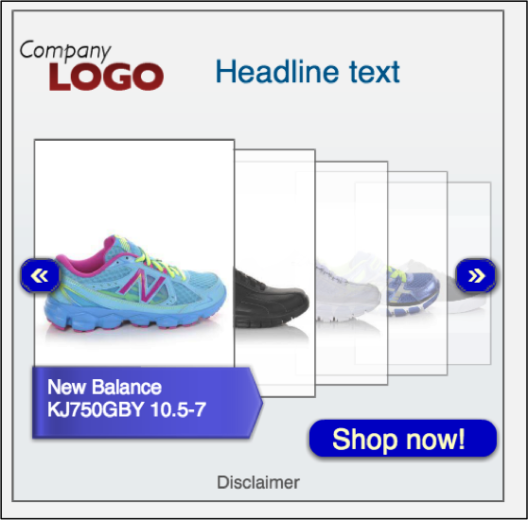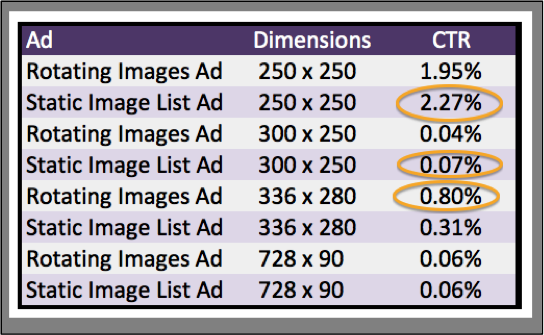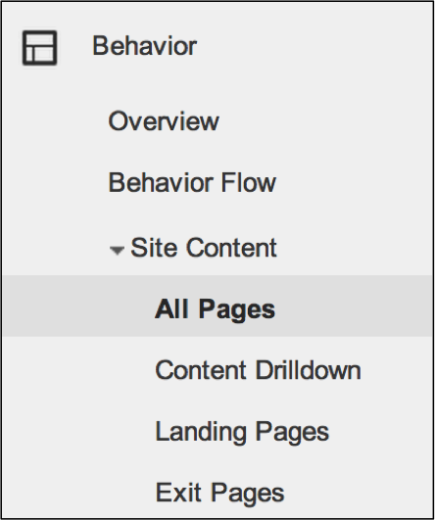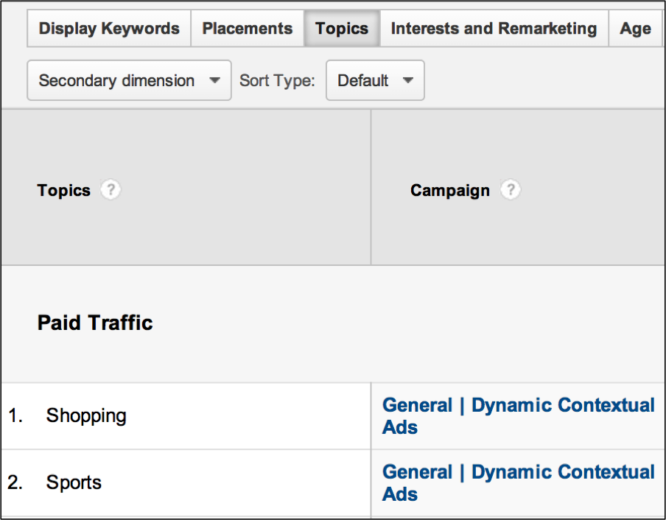Often new products come through Google and Bing and suddenly the PPC blogosphere is ablaze with chatter. Enhanced campaigns, extended sitelinks, Search Companions, Remarketing Lists for Search Ads, and scores more have been the subject of conversations over the past few years. A shortcoming however, is the follow up to these features. We know how to set them up, and why you may benefit from them, but what happens once it’s been running for a while?
Today’s topic is Dynamic Contextual Ads, one of the more recent betas available to you in Google AdWords. We’re going to take a look at exactly what you should be doing to identify the value this campaign type brings, as well as analysis that will lead you to powerful optimizations.
For those who may have missed the recent announcements of Dynamic Contextual Ad campaigns, here are the highlights:
- These are dynamically generated products, drawn from your Merchant Center data feed.
- The ad format is at your discretion and you can choose any number of layouts, such as:
- These formats allow for customized colors, language choice and product info. As always, the Google Display Ad builder is very particular and you should go to it with an open mind.
- Google chooses which product to show as it sees fit (see “Dynamic”) and when your ads are clicked upon, users are taken to your products’ pages.
Simple, right? Sure! And we’ve covered ad nauseam the potential benefits of a campaign like this, such as:
- Constantly updated ads, focusing on what’s currently available in your inventory.
- Display targeting allowing for messaging focused on specific audiences, including your headline and CTA.
- Testing different layouts, messaging, and dimensions gives you the opportunity to improve performance as time goes on.
So you’ve given in to our coaxing and you set it up. You’ve been running the campaign for a few weeks and are ready to begin the optimization process. The most common questions are “Where do I start” and “What reports do I look at?”
Display Ad Performance Report
This report is awaiting you in the Ads tab of your AdWords account. Because there is much behind the mystical curtain of this campaign, one of the first places to look is your ad performance. Now, in theory, you’re testing a few different formats in your campaigns. This testing will allow you to better identify what is getting the most impressions and what layout seems most enticing.
In the example below, there are two main formats being tested. A “carousel” of products that rotate in the ad and an ad with a featured image and a sidebar of additional products. In this example, there are 4 sizes that are running within an ad group. Of these, some are receiving better engagement. As we get more statistically confident with the winning ad layout, we can narrow this style down and focus more on our targeting.
AdWords Placement Report
As is common to Display campaign optimizations, you’ll want to begin with a placement report. If by some miracle omission you have never pulled a placement report, go to your Display Network tab and click the “Placements” button. Easy peasy and an important part of keeping your campaign running at maximum efficiency.
The placements that reveal themselves to be using a substantial portion of your budget without successful conversions is where you begin setting some exclusions. Stop wasting your time and money on these placements. Contrarily, if there are placements that are bringing in consistent conversions, consider creating it as a managed placement, where you can put extra emphasis on these domains.
But as we’ve said, this optimization is elementary and if you’re not doing it yet, go back through any Display campaign you’ve ever run and look for these obvious opportunities to improve (or to have improved) performance.
Google Analytics All Pages – Campaign
Since AdWords offers limited visibility into the exact products showing in your Dynamic Contextual Ads, you need to get creative in how you identify what’s been showing and, more importantly, what’s been working. To do this, you’ll want to hop into your Google Analytics account and begin at the All Pages segment of your “Behavior” tab.
Before exporting your results, remember to switch your primary dimension to “Page Title” (it will help with wrapping your brain around your results).
You’ll also want to add in the Secondary dimension of “Campaign.” Now you’re ready to download your report!
This report allows you to look at the pages that have been frequented through your Dynamic Contextual Ads, meaning these are the products people are clicking on.
This is the (second) best view you’re going to get of this account, so soak it in.
What am I looking at? Well, I’m looking at the fact that the majority of clicks I receive through DCA are for women’s shoes. Moreover, they’re for athletic-type shoes. From this data, I can examine what I’m seeing in other channels. Are my Shopping campaigns currently segmented to support these products? Are they present in my Search campaigns? When presented with Skechers Twinks, Life Stride Diverse, and Dual Fusion Lite sneaks, people are compelled to click and I better make sure I’m not missing out. I can also see that some of these high-click products have minimal time on the page. Is my selection extremely limited? Do I only have size 13 in this style? Those products receiving the most clicks are ready for your review and optimization!
NOTE: The great news is that these ads, unlike traditional Display ads, are based off of my data feed, which means these products are currently in stock when the user clicks on them. No worrying if I’m sending them to a “Item Out Of Stock” page. Phew.
Google Analytics – Display Targeting
Since your Dynamic Contextual Ads require some sort of targeting, you’ll want to make sure you’re looking at the engagement and conversion volume by these layers. In the Analytics interface, you can pull a report that reveals the overall success of your Display targeting.
From this report, you can segment by any of those classic Display targeting options: Keywords, Placements, Topics, Interests & Remarketing, even Age & Gender! Amazing! Here’s a quick look at what you’ll get from these new reports:
To best take advantage of what you’re seeing, be sure to regularly segment them into not only campaign dimensions, but also ad groups. Add to that all those fun Analytics metrics like time on site, average time per page, unique vs. returning visitors, and so on, and you’ve got some opportunities to really boost performance!
Multi Channel Funnels
This is one of my favorite reports to really examine the big picture. Multi Channel Funnels allow you to see how paid search interacts with other marketing channels for your business. When looking at Dynamic Contextual Ads, part of the value resides in the customer acquisition portion of the engagement. Do we see increased direct traffic after a user has clicked on a DCA ad? While we’d love to have a clear link between DCA and sales, sometimes it takes another view.
The Multi Channel Funnel report seen below comes from the GA Conversions tab, as part of the Top Converting Paths:
From my list of MCF, there are several conversions that were initiated with a DCA ad and eventually led to a direct or organic transaction. If you are approaching your online marketing efforts holistically, you’ll see the clear value in these ads. And as a side note, because they are through the Display Network, they will classically be at a drastically lower CPC than your Search terms or even your Shopping Campaigns.
For the account listed above, we traditionally see a $0.98 average CPC for these search campaign keywords. However, the Display Contextual Ads are coming in at an average of $0.22 per click, which allows for more flexibility in how we assess them. And after only a month or so of data, and continued room for improvement, these numbers are certainly promising.
Wrap Up
So now you’re asking, “Carrie, you make DCA seem so flawless! Could we really have found the answer to all our Display ad dreams and wishes??” And my answer would be “Nope.” Sure, DCA serves its purpose and can definitely assist in boosting low-cost sales and overall exposure, but it’s not a guaranteed thing. In fact, it may not be the best fit for you.
While there are many ways in which you can build your targeting, there is still limited visibility and thus it’s challenging to keep track of what exactly isn’t working. You can see what’s generating clicks without actual time on site, but not a clear list of what products show when.
As Google continues to sort out what features and reports are most useful to DCA users, we hope for improved transparency and performance, too!
What are you finding with your new DCA campaign? Did you jump on the bandwagon or are you still awaiting the data that will justify these ads? Let us (and Google) know your experiences!













